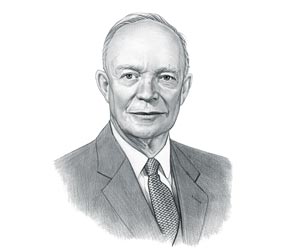|
|
|
|
|
The Southern Christian Leadership Conference (SCLC) was established following the success of the Montgomery Bus Boycott that proved that non-violent protests could bring about change in the African American quest to achieve Civil Rights equal to those of whites and bring an end to the "separate but equal" doctrine that legalized segregation. The role of the African American Church and its black ministers helped to shape the vision for the Civil Rights Movement. Facts about
SCLC Background History: The 1896 Plessy vs. Ferguson case had declared segregation to be constitutional leading to the Jim Crow Laws and the "separate but equal" doctrine. Background History: In 1954, the Supreme Court reversed the Plessy vs. Ferguson decision in the Brown vs Board of Education legal case, ruling that racial segregation was inherently unequal and a violation of the 14th Amendment. Background History: In 1900 the city of Montgomery, Alabama had passed a city law for the purpose of segregating passengers. Public Buses were segregated to provide "separate but equal" seating for white and black passengers. On December 1, 1955, a 42 year old African American seamstress called Rosa Parks refused to give up her seat to a white man and was arrested. Background History: The Rosa Parks protest led to the 381 day Montgomery Bus Boycott. The Montgomery Improvement Association (MIA) was established to organize the Montgomery bus boycott and the Reverend Martin Luther King, Jr. was elected as its president. The boycott resulted in a Supreme Court ruling that declared that segregation on Alabama’s intrastate buses was unconstitutional. The success of the Montgomery Bus Boycott proved that non-violent protests could bring about change and the Civil Rights Movement gained momentum. The aim was to achieve Civil Rights equal to those of whites and bring an end to the "separate but equal" doctrine that legalized segregation. The role of African American churches, and their ministers, played a major role in the success of the Montgomery Bus Boycott. The ministers were respected leaders in the communities, and the churches were a focal point for meetings and forums of African Americans. Church volunteers spread the news of their campaign and donations from across the country helped the people of Montgomery with the hardships of the boycott. Black churches were one of the only institutions in society where African Americans had relative freedom from the control of white people. African American congregations were places where Political and Social leaders of congregations developed to further the interests of the black community. Black ministers received their salaries from the church, and therefore free from white influence, which enabled them not only be clergy but also to serve as community leaders, social justice activists, and leaders of civil rights organizations. Black ministers and black churches helped to shape the vision for the Civil Rights Movement. Other bus boycotts began to spread across the South and leaders of the Montgomery Improvement Association (MIA) met with other Civil Rights leaders in Atlanta on January 10 – 11, 1957, to form a regional organization to coordinate protests across the South. Reverend Martin Luther King, Jr. together with other African American leaders, motivated by the boycott victory, founded the Southern Christian Leadership Conference (SCLC) on February 14, 1957. At this point in time white Americans were segregated from black Americans in transport, housing, education, rest rooms and restaurants. African Americans were also denied the right to travel freely and the right to vote. The aim of the Southern Christian Leadership Conference (SCLC) was to eliminate segregation and encourage African Americans to exercise their right to vote. The organization known as the Southern Christian Leadership Conference (SCLC) established an Executive Board of Directors who included Dr. Martin Luther King, Jr. (President) Dr. Ralph David Abernathy (Financial Secretary and Treasurer) Rev. C. K. Steele (Vice President) Rev. T. J. Jemison (Secretary) and Attorney I. M. Augustine as General Counsel. Ella Baker later served as secretary for the SCLC. The first conference was convened in August 1957 in Montgomery and agreed to encourage the affiliation of local community organizations with SCLC across the South. The Southern Christian Leadership Conference (SCLC) backed all forms of non-violent protests against racial discrimination and segregation including boycotts and marches and legal challenges via the judicial system. The SCLC organization quickly became an important part of the civil rights movement together with other major civil rights groups such as the National Association for the Advancement of Colored People (NAACP), the Student Nonviolent Coordinating Committee (SNCC), and the Congress on Racial Equality (CORE). The SCLC is still active as a national and international human rights organization with headquarters in Atlanta, Georgia and has published the SCLC Magazine since 1971. |
| US American History |
| 1945-1993: Cold War Era |
|
|
|
|
|
First Published2016-04-19 | |||
|
Updated 2018-01-01 |
Publisher
Siteseen Limited
| ||
|
|

